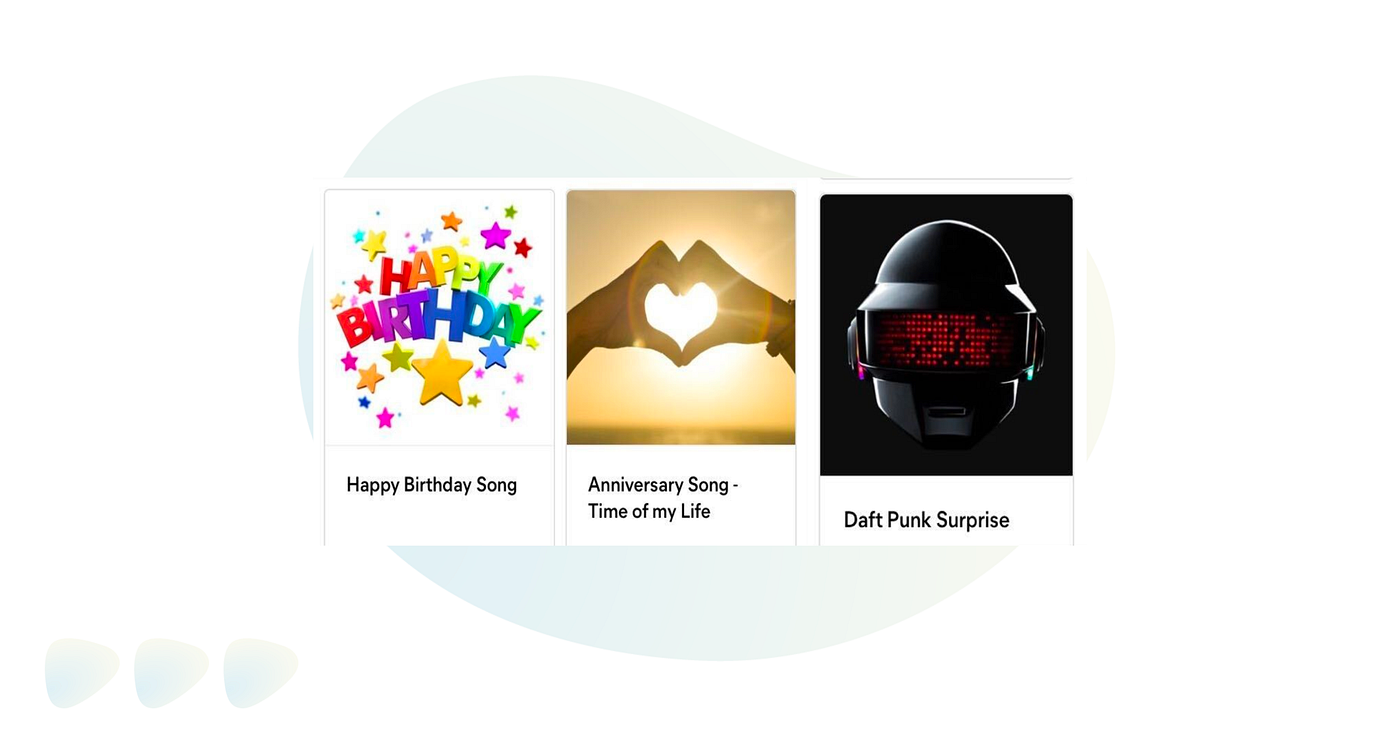By March 2022, Starship robots had played more than 108,000 songs over the past seven months, meaning our customers put around 500 songs into their basket every day when ordering from Starship. That’s an awesome outcome considering that it wasn’t was possible until recently. How did we achieve this?

People order songs, add to their basket along with milk and bread, like a regular grocery item. After that, the items are collected and loaded into a Starship robot. When the robot arrives at the customer and the customer opens the lid, the robot starts playing the selected song. What a lovely and entertaining surprise! But it has not always been like that.
Seven months ago, all our robots said was “Good afternoon!” or “Bon appetit!” and no one could even imagine robots playing more than 100 000 songs throughout the next half a year!
Starship’s Senior Backend Developer, Misha Stepanov recalls that when he joined the company in Spring 2021, robots could only dance. “For that, we were supported by a choreographer who helped us to put several robots to move around in sync. They danced beautifully and it was fun to watch,” comments Misha and admits that this inspired him to also come up and create something new and unique himself.
For that, Misha started testing his ideas with Anti Veeranna, Starship’s Senior Product Design Technologist who has worked in the company from near the very beginning. Thanks to that, Anti knows everything and everyone, has a hand in many endeavors and was happy to bounce around all crazy ideas.

In the COVID pandemic, people were already getting used to self-isolation and working or studying from home. At the same time, this new situation had also increased stress levels, since many often felt rather lonely.
On the positive side, we received feedback that Starship robots and deliveries tend to cheer people up during these difficult times. The idea was catchy and inspiring — if something like that can brighten up someone’s day a bit, then it is worth the effort and time to think about how to boost it more. That resulted in Misha and Anti focusing solely on bringing robot interaction to another level.
They wondered whether it would be possible to get a Starship robot to play “Happy Birthday”, when it’s the customer’s birthday for example. “We knew that if we could pull this off and make it happen, then any other scenario would not be difficult either. Therefore, we focused on its implementation,” Misha explained.

Therefore, the first idea was to redevelop Starship’s current mobile application, so that together with ordering a grocery basket, one could also choose a song as a separate add-on. However, creating this solution seemed like it would take a bit too many development hours, long releases, another team’s input and coordination between different departments.
Anti then suggested that what if a song could be added into the basket as a regular product, meaning that no interface development is needed, including no additional programming or a long coordination process. Sounded perfect and a lot easier!
It seemed that the only development effort needed was:
- To add an additional item (songs) to the menu, and;
- To remove a song after the order is placed in order not to pass it to the restaurant, as the song cannot be cooked, and;
- When the customer opens up a robot’s lid, the system should check if any song was ordered and if yes, then it should be played.
By the way, it has to be brought out that Starship robots already knew how to play mp3 files, since they were able to say “Good afternoon!”, “Have a nice day!” and “Bon appetit!”. Therefore, from the technical point of view, it was not difficult to get robots to sing.
Misha and Anti understood that if their idea was technically as feasible as it was, then their next goal was to also convince others that this is exactly what Starship needed.
They were lucky to find the right people from the marketing department who were delighted and fascinated by the idea. For marketing, adding a song to Starship deliveries would also add a new unique selling proposition to the service.
Therefore, the marketing team took over the entire organizational side of the process, meaning that they bought songs from song owners, had a discussion with the menu department, introduced new virtual goods to our system, covered all agreements with partners and provided full marketing support.
The first three purchased songs that Starship robots were able to play, were:

Everything else went according to plan: PR, marketing messaging, layout for the first clients, deploying the first city (Milton Keynes), then the first country (England), and then came the global rollout.
“Seeing this finally happen was amazing and a delight to witness for both of us,” Misha commented.
Today, customers can choose between 3–5 songs, which change frequently, depending on time and location. Our service is constantly evolving.
Hence, to make a robot sing, you just need one cool idea, two colleagues to brainstorm at lunch, a couple of days for development … and then the whole company to support it.
The result was warmly welcomed by everyone — the team, the company, and most importantly — our Starship customers! 100 000+ orders only confirms that.
Well done, Misha and Anti!
